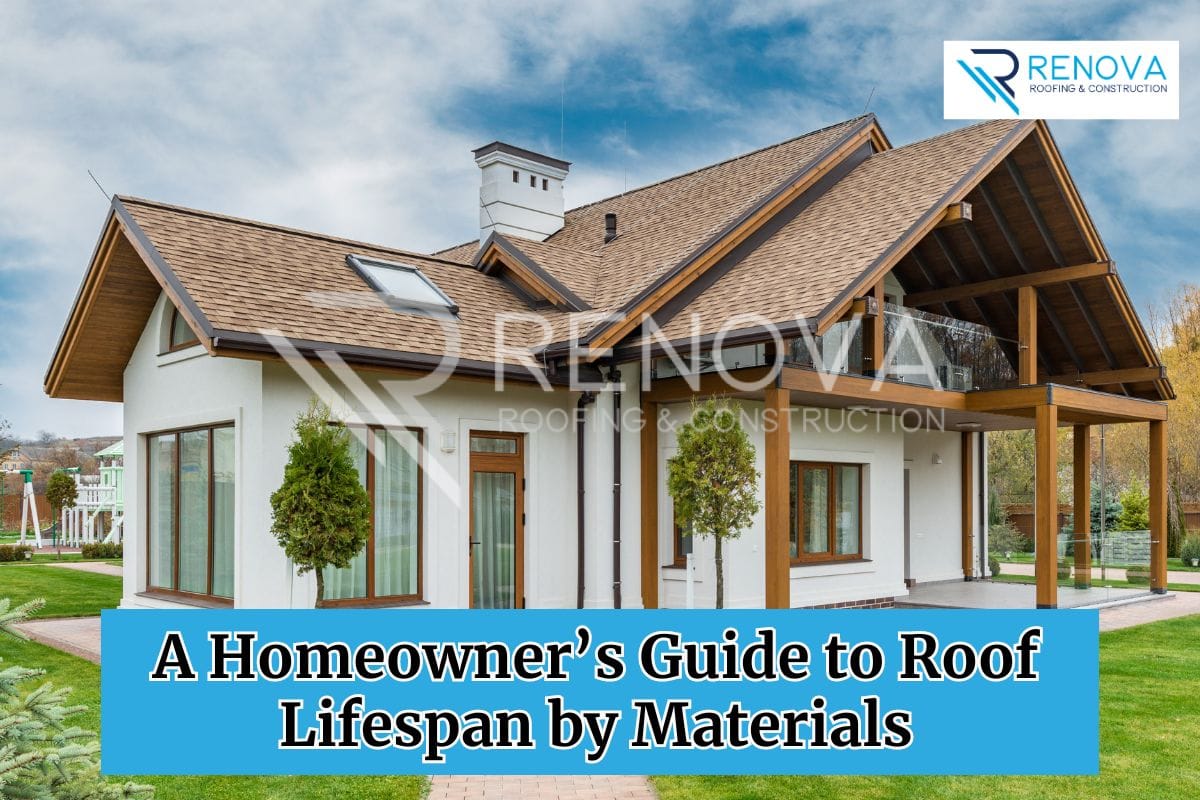Being a homeowner, you probably understand that your roof plays a crucial role in shielding your home from rain, snow, wind, and sun. But how long does it typically last? The answer largely depends on the lifespan of the roofing material.
To help you choose the best roofing material for your needs, in this blog post, we will explore the average lifespan of a roof, factors affecting durability, and tips for making a final choice. With this insight, you’ll be ready to make informed decisions and ensure your home remains protected for years to come.
Different Types Of Roofing Materials And Their Roof Life Expectancy
Knowing the lifespan of various roofing materials as a homeowner will help you make wise decisions regarding your roof.
#1. Asphalt Shingles
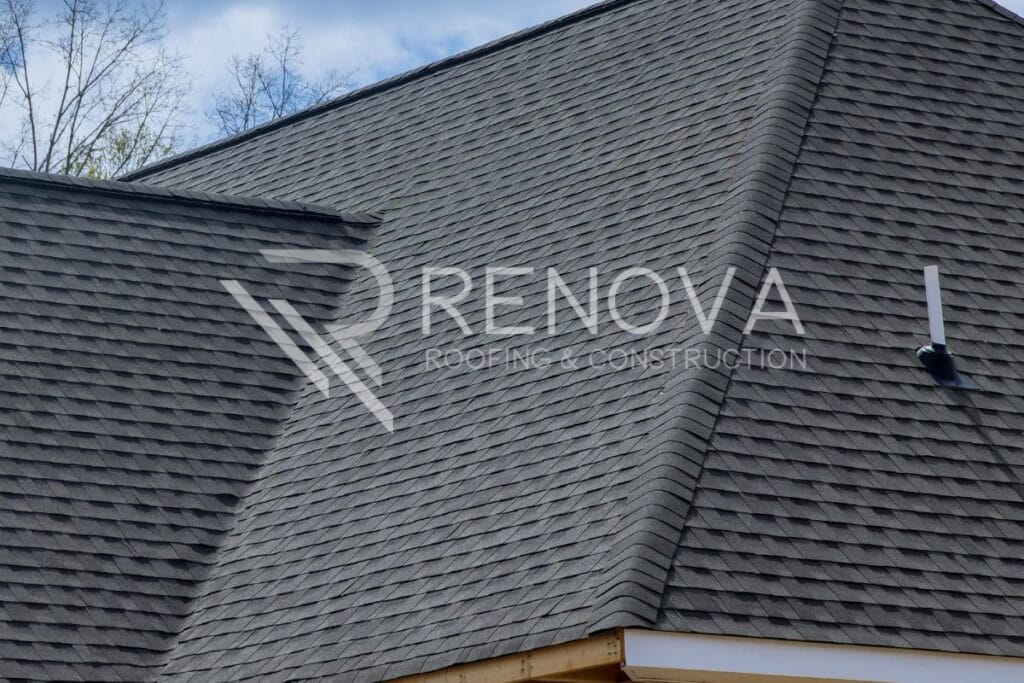
A popular choice, asphalt shingles are known for their low cost and easy installation. These shingles consist of a fiberglass mat coated in asphalt and mineral granules, and they are available in two main styles: 3-tab and architectural.
The lighter 3-tab version typically lasts about 15 to 20 years, while the architectural shingle roof lifespan can extend up to 30 years. With a wide range of colors and styles available, asphalt shingles fit various home designs and are easy to repair, making them a favorite for many homeowners.
#2. Metal Roof
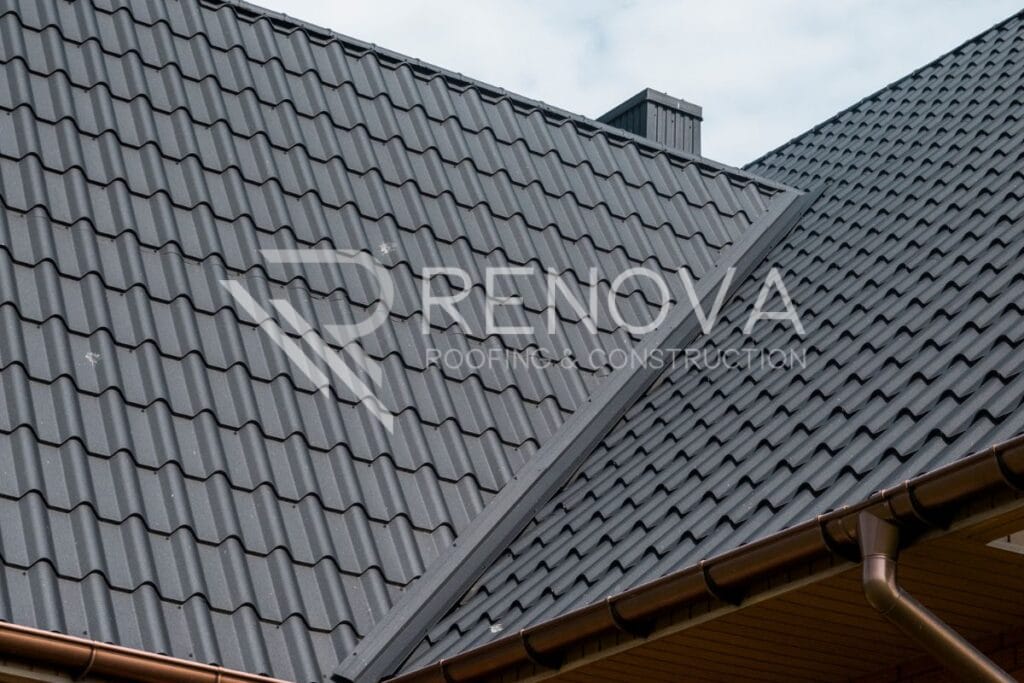
Metal roofs are gaining popularity due to their impressive strength and long lifespan, often lasting 40 to 70 years. These roofs are made from materials like steel, aluminum, or copper that can withstand severe weather, including heavy rain and strong winds.
They are also fire-resistant and can reflect solar heat, helping to lower energy bills. Available in different styles that mimic traditional materials like shingles or tiles, metal roofs are lightweight, which simplifies installation and reduces stress on the building’s structure.
#3. Slate Tiles
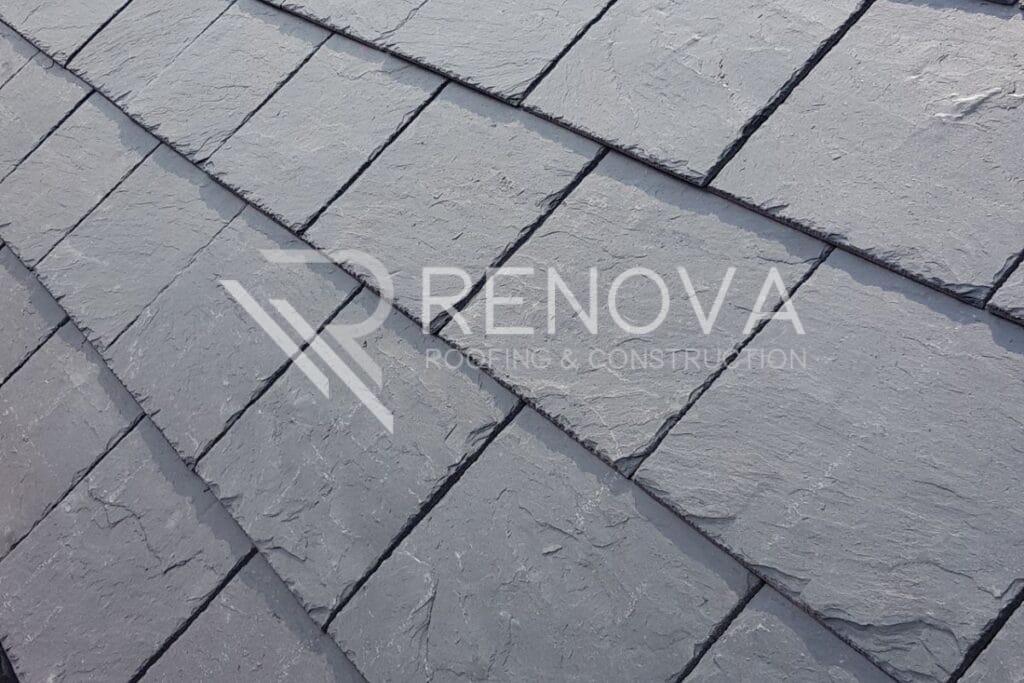
Offering a premium choice, slate tiles are admired for their beautiful appearance and incredible durability. This natural stone can last anywhere from 75 to 100+ years, making it one of the roofing materials with the longest lifespan.
Slate tiles are resistant to fire, insects, and decay, ensuring they remain intact for decades. Each tile has a unique color and texture, adding character to any home. However, due to their weight, slate tiles require a strong support system for proper installation.
#4. Wood Shingles and Shakes
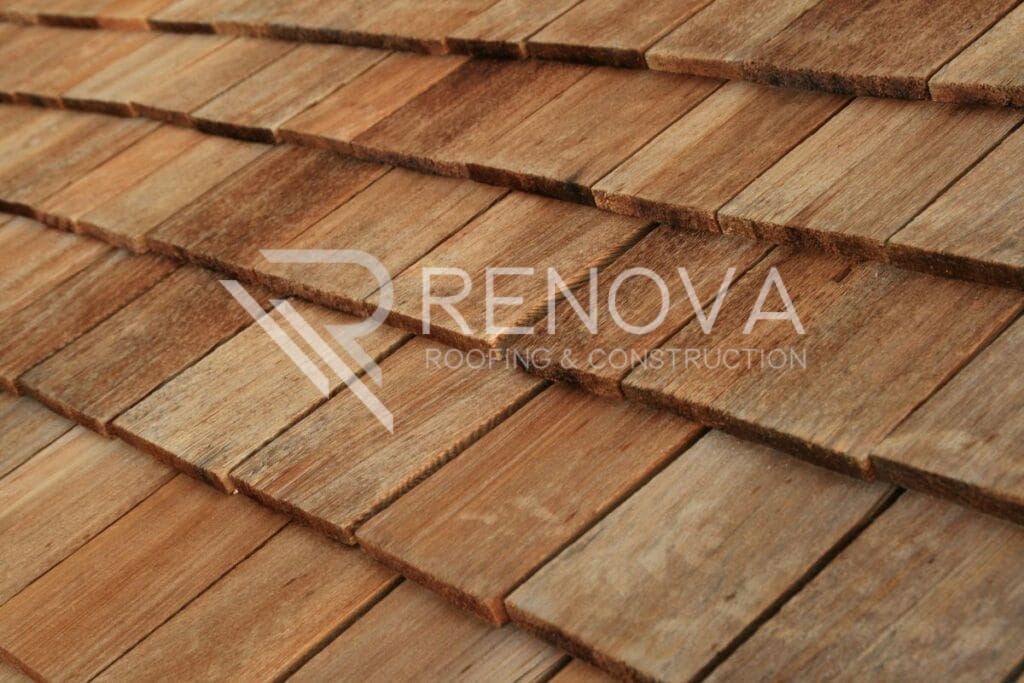
Bringing a rustic touch, wood shingles and shakes are great for homeowners seeking a natural aesthetic. Typically made from cedar or redwood, these materials can last around 30 years, giving them a roof lifespan of several decades when properly maintained.
Wood shingles are machine-cut for uniformity, while shakes are hand-split for a more rugged look. Both options provide excellent insulation but need regular maintenance to prevent rot and pest damage. Their natural appearance makes them especially popular in wooded areas and traditional architectural styles.
#5. Clay Tiles
Renowned for their unique appearance and durability, clay tiles can last between 50 to 100 years. With a roof lifespan that exceeds many other options, these tiles are made from natural clay molded and fired at high temperatures, providing great insulation.
Their ability to endure harsh weather makes clay tiles ideal for warmer climates, where they effectively reflect sunlight. Available in various shapes and colors, clay tiles add elegance to any roof design while ensuring lasting performance.
#6. Concrete Tiles

As a strong alternative to clay tiles, concrete tiles offer impressive durability with a lifespan of 35 to 50 years. Concrete tile roofs are created from a mixture of sand, cement, and water, allowing them to mimic traditional roofing materials while providing excellent strength.
Concrete tiles resist fire, wind damage, and pests, making them suitable for various climates. With numerous colors and styles available, concrete tiles can enhance a home’s appearance while delivering long-lasting performance.
#7. Synthetic Composite Shingles
Designed to look like traditional materials such as wood or slate, synthetic composite shingles are built for durability. Depending on the specific product, they typically last between 30 and 50 years.
Made from recycled materials or polymers, these lightweight shingles resist fading, cracking, and impact damage. Synthetic composite shingles are available in many styles and colors, allowing homeowners to achieve their desired look without sacrificing durability or longevity.
Comparing Different Roof Types, Lifespan, and Weather Suitability
Below, we’ve simplified everything you need to about each roofing material in a chart for easy reference.
| ROOFING MATERIAL | LIFESPAN | SUITABLE WEATHER CONDITIONS |
| Asphalt Shingles | 15-30 years | Moderate climates; struggles in extreme heat/humidity. |
| Metal Roof | 40-70 years | All weather; excellent for rain, snow, and high winds. |
| Slate Tiles | 100+ years | All climates; highly durable against extreme weather. |
| Wood Shingles and Shakes | 30-50 years | Best for moderate climates; moisture-sensitive. |
| Clay Tiles | 50+ years | Hot, dry climates; may crack in extreme cold. |
| Concrete Tiles | 50-100 years | Versatile; resistant to wind and rain, but heavy. |
| Synthetic Composite Shingles | 30-50 years | Performs well in various conditions, including high winds. |
What Is The Lifespan Of A Flat Roof?
Depending on the material, flat roofs, just like pitched roofs, have differing lifespans. Let’s go over the most popular materials:
1. EPDM (Ethylene Propylene Diene Monomer)
This highly durable synthetic rubber roof can last between 30 to 50 years when installed correctly. EPDM is resistant to UV rays, hail, and temperature changes, making it suitable for various climates. With regular maintenance, some installations may even exceed a lifespan of 50 years under optimal conditions.
2. Built-Up Roof (BUR)
Typically lasting 15 to 30 years, built-up roofing systems are made from layers of roofing felt, asphalt, and gravel, offering excellent waterproofing and durability. The longevity of a BUR depends on the quality of installation and ongoing maintenance, with regular inspections and timely repairs helping to extend its lifespan.
3. PVC (Polyvinyl Chloride)
Known for its reflective properties and chemical resistance, PVC roofs generally last between 20 to 30 years. Commonly used for commercial buildings, this roofing material provides good durability and energy efficiency, but environmental conditions and installation quality can significantly influence its lifespan.
4. Modified Bitumen
With a lifespan of around 20 to 25 years, modified bitumen combines traditional asphalt with modern polymer technology for enhanced flexibility and durability. While it is easier to install and maintain than BUR systems, it may require more frequent repairs as it ages.
5. TPO (Thermoplastic Polyolefin)
Lightweight and energy-efficient, TPO roofs usually last about 20 years. This roofing type is resistant to UV rays and chemicals, but its shorter lifespan compared to more durable materials like EPDM or PVC means property owners might need to plan for a replacement sooner.
Also Read: EPDM vs. TPO Roofing: Which Is Best For Your Commercial Roof?
Bonus Option: Green Roofing System
An eco-friendly option, green roofs involve cultivating plants on rooftops, offering insulation and beauty. While not made of a single material, this roofing system includes a waterproof membrane, soil, and a variety of plants from flowers to small trees. Depending on plant choice and care, these systems can last between 30 to 50 years.
Green roofs improve energy efficiency by reducing heat absorption and promote biodiversity by providing habitats for local wildlife. Additionally, they effectively manage stormwater runoff by soaking up rainwater through the soil.
With their environmental benefits and aesthetic appeal, green roofs are becoming popular for homeowners who prioritize sustainability.
How To Extend the Lifespan Of A Roof
Maintaining the longevity of your roof requires constant upkeep. To keep your roof in the best possible state, consider the following suggestions:
1. Regularly Clean Gutters
Keeping gutters clear prevents water from pooling on your roof. Clogged gutters can cause leaks by allowing water to seep under the roofing material. Regular cleaning ensures rainwater flows freely, extending your roof’s lifespan.
2. Ensure Proper Attic Ventilation
Good ventilation regulates temperature and moisture in your attic. It helps prevent heat buildup in summer and reduces the risk of mold growth, both of which can harm your roof.
3. Insulate Your Home
Proper insulation boosts energy efficiency and stabilizes attic temperatures. This helps reduce condensation and moisture, protecting roofing materials from damage.
4. Conduct Annual Inspections
Yearly inspections by professionals catch issues like missing shingles early. Regular checks help prevent small problems from turning into costly repairs, keeping your roof in good shape.
5. Promptly Repair Damage
Quickly fixing cracks or damaged components prevents leaks. Consider professional repairs to keep your roof watertight.
How To Choose The Right Roofing Material For Your Home
Picking the right roofing material depends on the following aspects:
1. Climate and Weather
Local climate affects roof lifespan. Hot weather causes wear, while cold can lead to other damage. Choose materials that suit your environment for better durability.
2. Roof Pitch
The slope of your roof impacts drainage. Steeper roofs shed water easily, reducing leaks, while flatter roofs need stronger materials to prevent pooling.
3. Installation Quality
Proper installation is vital for longevity. Poor installation can cause early failure, so it’s important to hire experienced professionals.
4. Maintenance Needs
Roofing materials require different maintenance. Asphalt shingles need regular checks, while metal roofs should be inspected for rust. Know the maintenance demands of each material before making your choice.
5. Cost vs. Longevity
Consider long-term value vs. upfront costs. Metal and tile roofs last longer but cost more initially, while asphalt shingles are cheaper but may need replacement sooner.
Also Read: Metal Roof vs. Shingles Cost: Which is More Affordable?
Want a Longer-Lasting Roof? Contact Rеnova Roofing & Construction Today!
Understanding a roof’s lifespan helps you make the best choice for your property. Slate and tile roofs last longer but need a higher upfront investment and structural support. Asphalt shingles and metal offer a good mix of durability and cost-effectiveness. Lifespans can vary due to climate, installation, and upkeep, so regular inspections are essential. If you’re unsure about your current roof’s condition or are thinking about a replacement, consult a licensed roofing professional for tailored advice.
Trust Renova Roofing & Construction’s professionals when it’s time to replace your roof. We offer premium roof replacement services for homeowners in Mississippi. Our team will walk you through the entire process, guaranteeing a seamless and stress-free experience. For an instant quote and to learn how we can help you safeguard your house with a long-lasting, gorgeous new roof, get in touch with us today at (601) 647-3433.

